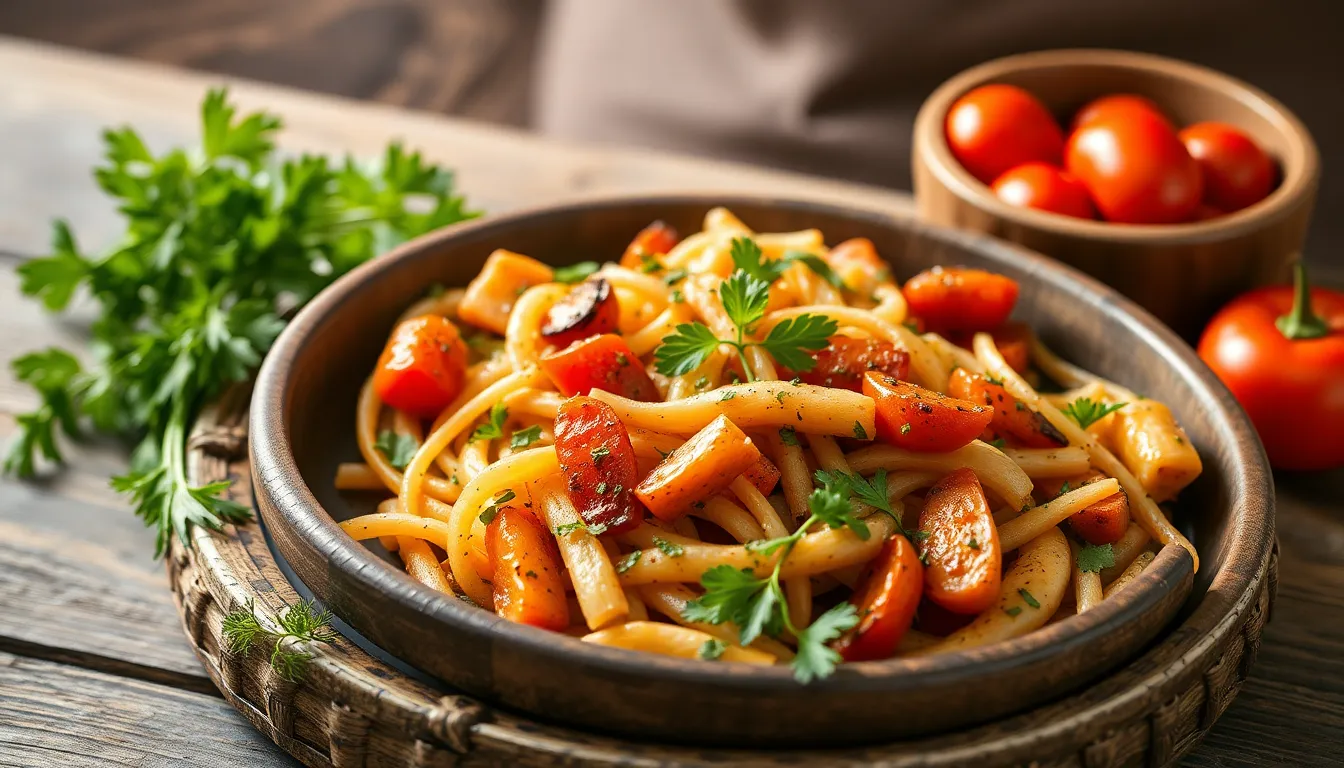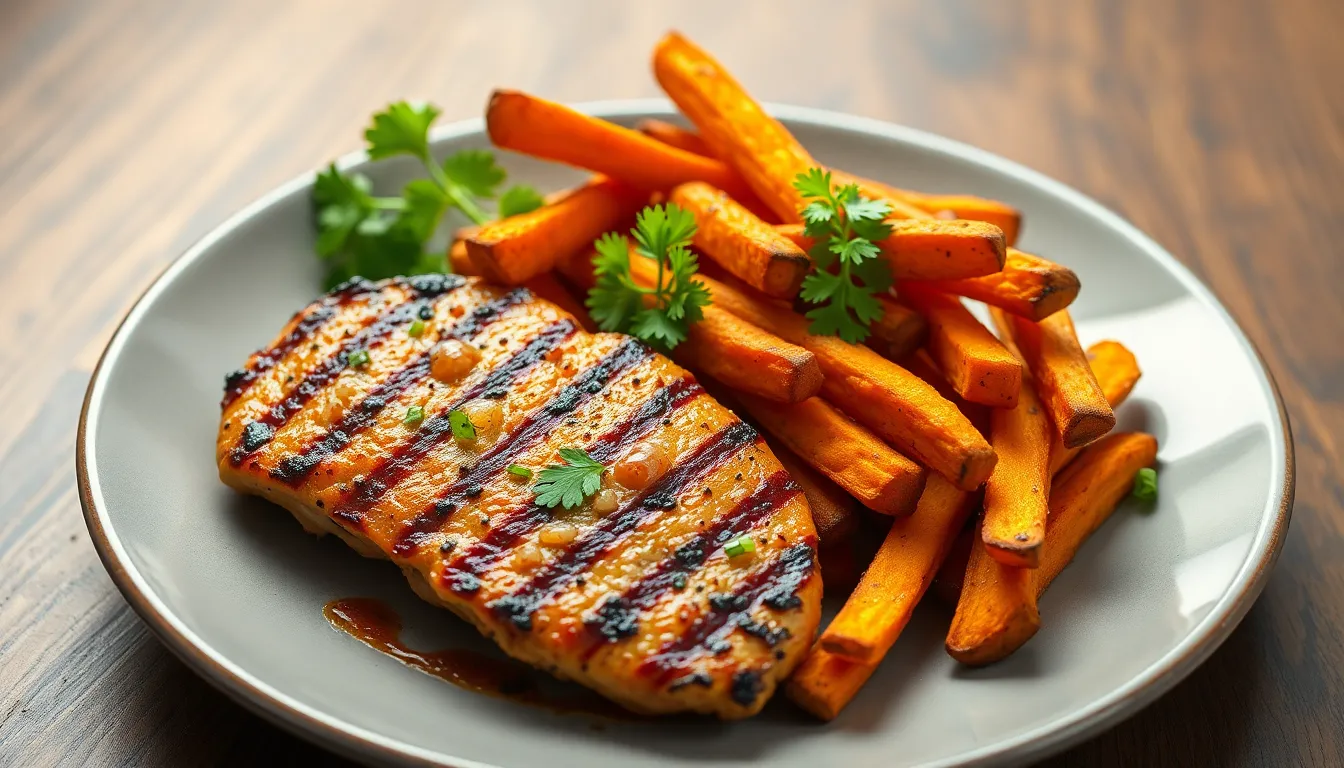From Garden to Table: The Joy of Cooking with Fresh Herbs
Cooking with fresh herbs is an experience that transcends the ordinary. The vibrant colors, fragrant aromas, and unique flavors they introduce to dishes can transform a simple meal into a culinary masterpiece. Fresh herbs not only enhance the taste of your food but also contribute essential nutrients, making them an invaluable addition to any kitchen.
This article will explore the myriad benefits of using fresh herbs, provide guidance on growing your own, and share tips on harvesting, storing, and cooking with these delightful plants. Whether you’re a novice cook or a seasoned chef, understanding the value of fresh herbs will elevate your culinary creations.
The Benefits of Fresh Herbs
1.1 Flavor Enhancements
One of the most significant advantages of using fresh herbs is their ability to enhance the flavor profile of any dish. Unlike dried herbs, which can lose their potency over time, fresh herbs deliver vibrant, complex flavors that invigorate your palate. They can add depth to sauces, brightness to salads, and richness to meats, transforming even the simplest meals.
1.2 Nutritional Value
Fresh herbs are not only about flavor; they also pack a nutritional punch. Many herbs are rich in vitamins, minerals, and antioxidants, contributing to overall health. For example:
- Basil: Rich in vitamin K and antioxidants.
- Parsley: Contains vitamins A, C, and K, along with folate.
- Cilantro: Offers vitamin K and has been linked to anti-inflammatory properties.
Incorporating fresh herbs into your meals can help boost your immune system and promote overall wellness.
1.3 Culinary Versatility
Fresh herbs are used across various cuisines worldwide, showcasing their versatility. From the fragrant lemongrass in Thai cooking to the pungent dill in Scandinavian dishes, herbs can complement a multitude of flavors. Here are a few examples:
- Italian: Basil, oregano, and parsley are staples in pasta dishes and sauces.
- Mexican: Cilantro is essential in salsas and guacamole.
- Middle Eastern: Mint and dill feature prominently in salads and dips.
Growing Your Own Herbs
2.1 Choosing the Right Herbs
If you’re inspired to cultivate your own fresh herbs, it’s essential to choose the right ones. Here’s a list of popular herbs that are easy to grow:
- Basil
- Rosemary
- Parsley
- Cilantro
- Thyme
2.2 Ideal Growing Conditions
Understanding the growing conditions for herbs is crucial for a successful herb garden. Most herbs thrive in well-drained soil and require adequate sunlight and water:
- Sunlight: Most herbs need at least 6-8 hours of direct sunlight daily.
- Soil: Well-draining soil rich in organic matter is ideal.
- Watering: Regular watering is necessary; however, be cautious of overwatering.
2.3 Tips for Beginners
Starting a herb garden can be easy and rewarding. Here are some tips for beginners:
- Start with a few herbs that you frequently use in cooking.
- Consider planting in pots if space is limited; they can be placed on balconies or windowsills.
- Regularly trim the herbs to encourage bushier growth.
Popular Herbs and Their Uses
| Herb | Flavor Profile | Best Uses | Growing Tips |
|---|---|---|---|
| Basil | Sweet, peppery | Pesto, salads, Italian dishes | Full sun, keep moist |
| Rosemary | Pine-like, floral | Roasting meats, potatoes | Well-drained soil, drought-tolerant |
| Parsley | Fresh, slightly bitter | Garnishes, salads | Rich soil, keep moist |
| Cilantro | Citrusy, spicy | Salsas, Asian dishes | Prefers cooler weather |
Harvesting and Storing Fresh Herbs
3.1 When to Harvest
Knowing when to harvest your herbs is key to getting the best flavor. Look for the following signs:
- Herbs should have grown to a decent size.
- Harvest in the morning when the oils are most concentrated.
- Pick leaves regularly to encourage growth.
3.2 Proper Storage Techniques
To maintain the freshness of your herbs, proper storage is essential. Here are a few techniques:
- Refrigeration: Store herbs like basil and parsley upright in a glass of water, covered loosely with a plastic bag.
- Drying: Hang herbs upside down in a dark, dry place to air dry.
- Freezing: Chop herbs and mix with olive oil or water in ice cube trays for easy use later.
Cooking with Fresh Herbs
4.1 Incorporating Herbs into Your Dishes
Fresh herbs can be incorporated into various types of meals. Here are some techniques:
- Soups: Add chopped herbs towards the end of cooking for fresh flavor.
- Salads: Toss whole leaves or finely chopped herbs into salads for added crunch and taste.
- Main Courses: Use herbs in marinades or as a topping for meats and vegetables.
4.2 Recipes Featuring Fresh Herbs
Here are a few delightful recipes showcasing the use of fresh herbs:
Recipe 1: Herb-Infused Olive Oil
Ingredients:
- 1 cup extra virgin olive oil
- 1 cup fresh herbs (basil, rosemary, thyme, etc.)
Instructions:
- In a saucepan, heat olive oil over low heat.
- Add fresh herbs and simmer for about 20 minutes.
- Strain the oil into a bottle and store it in a cool, dark place.
Recipe 2: Fresh Herb Salad
Ingredients:
- 2 cups mixed greens
- 1 cup chopped fresh herbs (parsley, cilantro, basil)
- 1/4 cup lemon juice
- 1/4 cup olive oil
- Salt and pepper to taste
Instructions:
- In a large bowl, combine mixed greens and herbs.
- In a separate bowl, whisk together lemon juice, olive oil, salt, and pepper.
- Pour dressing over salad and toss gently to combine.
Recipe 3: Grilled Chicken with Herb Marinade
Ingredients:
- 4 chicken breasts
- 1/2 cup chopped fresh herbs (thyme, rosemary, parsley)
- 3 cloves garlic, minced
- 1/4 cup olive oil
- Juice of 1 lemon
- Salt and pepper to taste
Instructions:
- In a bowl, mix herbs, garlic, olive oil, lemon juice, salt, and pepper.
- Marinate chicken breasts in the mixture for at least 30 minutes.
- Grill chicken until cooked through, about 6-7 minutes per side.
Preserving Your Herb Harvest
5.1 Drying Herbs
Drying herbs is a practical way to preserve your harvest. Follow these steps:
- Choose healthy stems and rinse them gently to remove any dirt.
- Bundle the herbs together and tie them with string.
- Hang the bundles upside down in a dark, dry place for 1-2 weeks.
- Once dry, crumble the leaves and store them in airtight containers.
5.2 Freezing Techniques
Freezing is another excellent way to preserve the freshness of herbs:
- Wash and chop the herbs.
- Place them in ice cube trays and fill with water or olive oil.
- Freeze until solid, then transfer to resealable bags for long-term storage.
Conclusion
Cooking with fresh herbs is a rewarding endeavor that enhances flavor, boosts nutrition, and brings freshness to your dishes. Whether you choose to grow your own herbs or purchase them at the market, integrating them into your cooking can elevate your meals to a new level.
We encourage you to start your herb garden and experiment with different varieties and recipes. Embrace the joy of cooking with fresh herbs and share your experiences with us. Happy cooking!
https://www.youtube.com/watch?v=1LJ7TA8pQZ8




